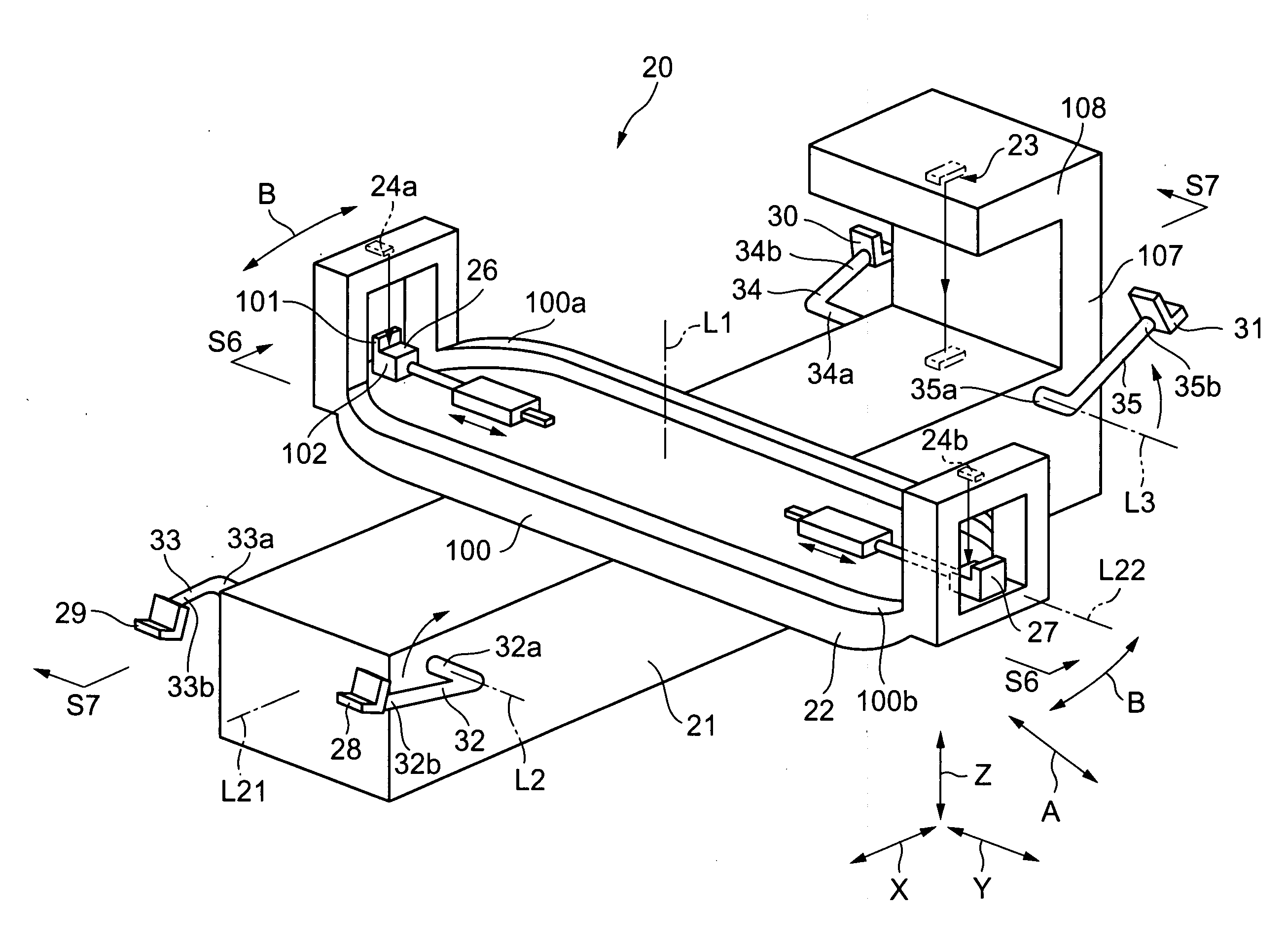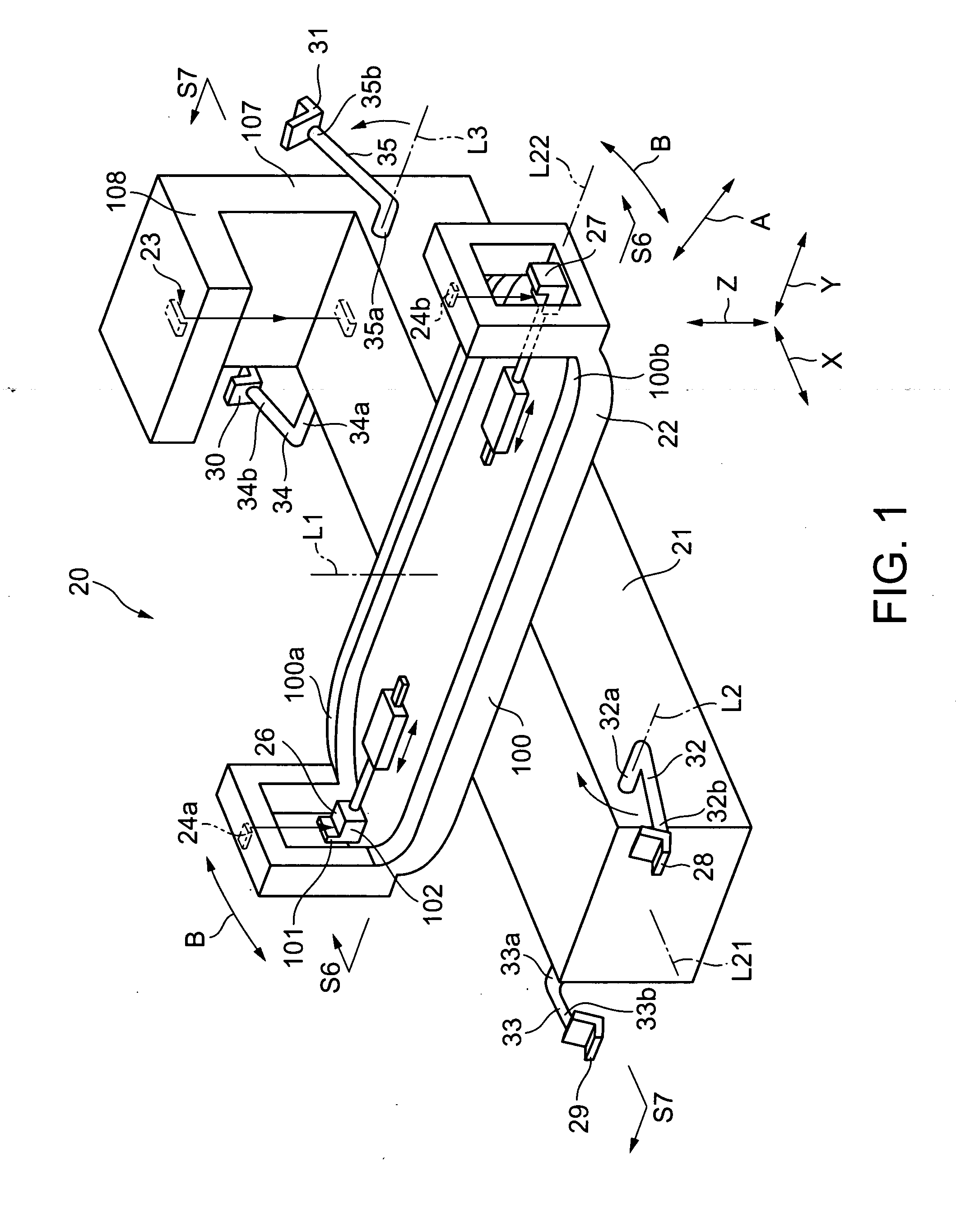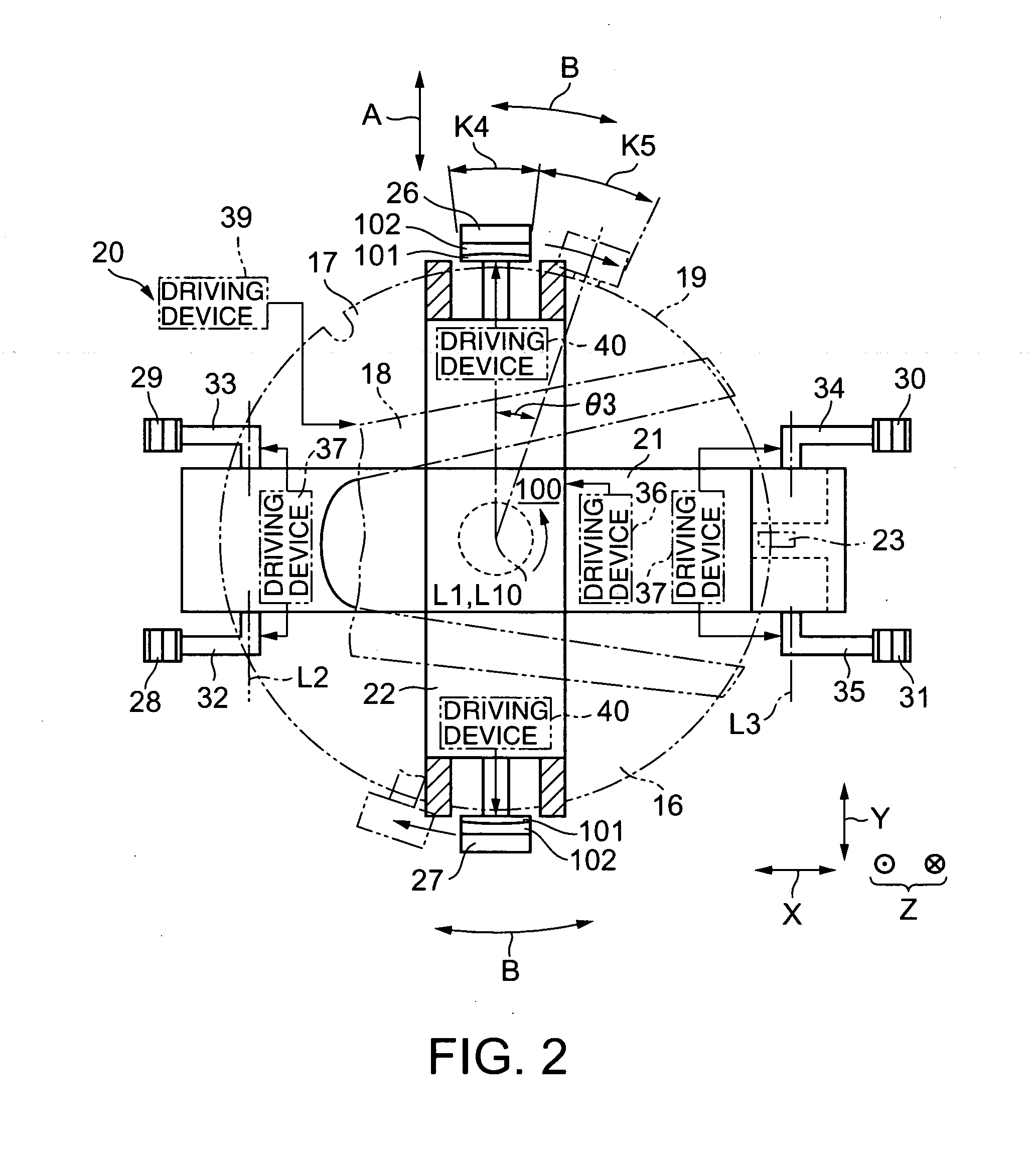Edge-holding aligner
a technology of a clamping and a clamping plate, which is applied in the direction of printing machines, instruments, electrical equipment, etc., can solve the problems of incorrect positioning of the substrate, inability to properly detect the notch, and long position adjustment procedure using the prior aligner, so as to reduce the possibility of the thus correctly placed substrate being dislocated during the transfer operation, reduce the teaching time, and secure the effect of holding
- Summary
- Abstract
- Description
- Claims
- Application Information
AI Technical Summary
Benefits of technology
Problems solved by technology
Method used
Image
Examples
Embodiment Construction
[0097]FIG. 1 is a typical perspective view of an edge-holding aligner 20 in a preferred embodiment according to the present invention and FIG. 2 is a plan view with certain parts omitted of the edge-holding aligner 20. In some of the accompanying drawings some parts are omitted or simplified to facilitate understanding.
[0098] An edge-holding aligner 20 (hereinafter, referred to simply as “aligner 20”) determines the angular position of a notch 17 formed in the edge 16 of a semiconductor wafer 19 and adjusts the position of the wafer 19 on the basis of the angular position of the notch 17. The notch 17 is an orientation indicator for use in adjusting the position of the wafer 19. The notch 17 is a V-shaped cut in the edge of the wafer 19.
[0099] The wafer 19 is carried to the aligner 20 by a robot hand 18, namely, a substrate carrying device. The robot hand 18 comes into contact with the wafer 19 from below the wafer 19 to support the wafer 19 thereof for carrying. The robot hand 18...
PUM
 Login to View More
Login to View More Abstract
Description
Claims
Application Information
 Login to View More
Login to View More - R&D
- Intellectual Property
- Life Sciences
- Materials
- Tech Scout
- Unparalleled Data Quality
- Higher Quality Content
- 60% Fewer Hallucinations
Browse by: Latest US Patents, China's latest patents, Technical Efficacy Thesaurus, Application Domain, Technology Topic, Popular Technical Reports.
© 2025 PatSnap. All rights reserved.Legal|Privacy policy|Modern Slavery Act Transparency Statement|Sitemap|About US| Contact US: help@patsnap.com



